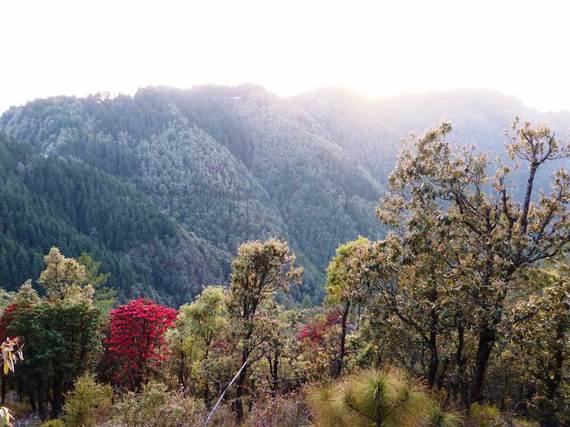
Image credit: Sejal Worah
There is no shortage of feel-good stories that applaud one person or community's resolve to save nature. Many of us will remember the Chipko Movement from our history lessons, which has probably gone on to inspire several other conservation movements. Then there is Jadav Payeng, a Padma Shri recipient, who planted a 1,400 acre forest by himself. His story was captured in the documentary Forest Man.
These are just two examples from the annals of nature conservation that highlight the importance of looking after the land we're so dependent on. This episode of The Intersection brings you a similar tale - the story of Sejal Worah, World Wildlife Foundation India's programme director, a woman who single-handedly revived the ecosystem of Mussoorie's Flag Hill.
There's a lot of determination and some of childhood nostalgia (she grew up in the vicinity of Flag Hill) in her story of how she saved an entire hill. But the key takeaway is how nature can often heal itself. "The land itself does a lot of work," T.R. Shankar Raman, a conservation expert, tells Samanth. What really made a difference in the case of Flag Hill was Sejal's efforts at removing human activity and simply letting nature be.
And this is not a one-off instance either. In the aftermath of the 2008 Sichuan earthquake that occurred in China, Jiang Gaoming wrote an article in China Dialogue, a website that reports on environmental issues, arguing in favour for letting nature repair itself. Gaoming writes, "But ecosystems - like biological organisms - can adapt to their environments and help themselves. Even after an earthquake, as long as there are seeds, roots and soil, an ecosystem can quickly restore itself. And these secondary successions require decades, rather than millenia [sic]. All it requires is "enclosure", which keeps the soil secure, while seeds and spores take root."
The story of Iraq's Mesopotamia marshlands is another example - once a rich wetland that supported a diverse ecosystem, the marshlands had been decimated over the years, because of political and agricultural factors, causing it to turn into an almost barren land by the year 2000. Post the end of Saddam Hussain's regime in 2003, locals destroyed the canals and dikes that had prevented water from flooding the wetlands, and over the next few years, the marshes started recovering. NASA's Earth Observatory website has a fantastic photo feature on the marshlands. While its ultimate fate is uncertain, it does act as proof of nature's remarkable resilience.
Justin Worland's article in Time underlines this. A new study in the journal Nature offers the strongest evidence yet that biodiversity strengthens ecosystems, increasing their resistance to extreme climate events and improving their capacity to stem climate change," he writes.
The larger point that stories such as Sejal's raise is that maybe we need to focus on letting nature take its course, literally. As Samanth perfectly puts it, "If we just ease our demand upon our land and water we will be surprised at how readily our planet rewards us."
Listen to all our podcasts here.
 Like Us On Facebook |
Like Us On Facebook |  Follow Us On Twitter |
Follow Us On Twitter |